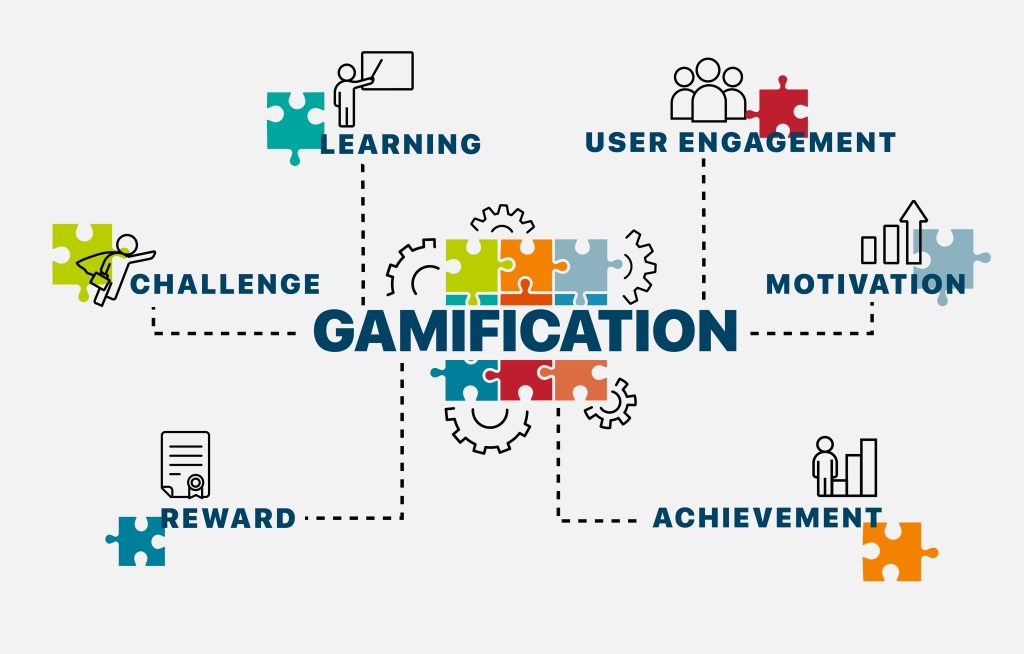
In recent years, gamification has transformed from a buzzword into a proven strategy for boosting engagement, motivation, and learning outcomes. By applying game-like mechanics—experience points (XP), badges, levels, and leaderboards—to non-game contexts, platforms tap into the same psychological drivers that keep players hooked. At NarraUX, we harness the power of gamification to teach UX writing through a series of microcopy quests, turning every assignment into a rewarding challenge. If you’ve ever wondered why XP and badges make you want to keep going—or how to apply those principles to your own learning or products—this deep dive will explain the psychology behind gamification, outline the core elements in NarraUX, share real data from our beta testers, and offer best practices for designing your own gamified UX writing curriculum.
The Psychology Behind Gamification
1. Reward Loops and Dopamine
Every time you earn XP or unlock a badge, your brain releases a small burst of dopamine—the “feel-good” neurotransmitter that creates a sense of satisfaction and motivates repeat behavior. Just like leveling up in a video game, completing a microcopy assignment and seeing your XP counter tick upward triggers a psychological reward loop. Over time, those little hits of positive feedback build habit and keep you coming back for “just one more quest.”
2. Sense of Mastery and Competence
Psychologist Richard Ryan’s Self-Determination Theory identifies competence—the feeling of skill and effectiveness—as a core human need. Gamification directly addresses this by breaking down complex learning goals into bite-sized tasks. When you finish a quest on crafting button labels, the XP and badge you earn signal real progress and reinforce your growing competence in UX writing.
3. Social Proof and Relatedness
Leaderboards, community challenges, and badge showcases tap into our innate desire for relatedness—another pillar of Self-Determination Theory. At NarraUX, you can see how peers are accumulating XP, display your own badges in our Slack group, and compare progress. This social dimension fosters friendly competition and peer accountability, boosting overall course completion rates.
Core Gamification Elements in NarraUX
Experience Points (XP)
Every assignment you submit—whether it’s a micro-A/B test of error messages or a succinct onboarding tip—earns XP based on complexity and accuracy. Points accumulate in your dashboard, encouraging you to tackle more advanced quests and track overall progress at a glance.
Badges and Milestones
Badges serve as visible markers of achievement. For instance:
- Bronze Scribe: Earned at 100 XP, signifying foundational mastery.
- Silver Scribe: Unlocked at 300 XP, recognizing advanced consistency.
- Gold Wordsmith: Awarded at 600 XP, celebrating expert-level nuance.
Each badge comes with a custom icon and can be showcased on your public profile or portfolio, offering external validation of your skills.
Levels and Progress Bars
Rather than a single XP tally, NarraUX segments lessons into “chapters” (e.g., Button Copy, Error States, Onboarding). Within each chapter, a progress bar visually tracks completion percentage. As you move from Level 1 to Level 2 in a chapter, the bar changes color, providing immediate feedback on how close you are to the next milestone.
Quests and Storytelling
We frame each lesson as a “quest” in an overarching narrative: you’re an apprentice writer on a mission to master microcopy in a futuristic, AI-driven academy. Story elements—brief NPC dialogues, scenario descriptions, and contextual backstory—make the tasks feel more meaningful than standalone exercises.
Case Examples & Early Results
When we piloted these mechanics with 120 beta learners, the impact was dramatic:
- Completion Rates: Users who followed the gamified path completed 85% of lessons on average, compared to 52% in a control group without XP or badges.
- Return Visits: Gamified users logged into the platform 2.3× more frequently during the first month of study.
- Peer Engagement: In our Slack community, badge-earning announcements generated 4× more reactions and replies than standard assignment posts.
“I found myself waking up thinking about which quest to tackle next,” reported one participant. “Earning the Silver Scribe badge felt like leveling up in my career, not just a course.”
These data points show that gamification isn’t just a gimmick—it substantively increases engagement, knowledge retention, and community involvement.
Designing Your Own Gamified Learning Path
If you’re considering adding gamification to your UX training—or any online course—here are best practices to follow:
- Define Clear Goals and Feedback
- Break your curriculum into discrete, measurable units (quests).
- Assign point values based on task difficulty and importance.
- Offer immediate feedback (XP notifications, badge pop-ups) upon completion.
- Balance Challenge and Skill
- Tasks should neither bore users (too easy) nor frustrate them (too hard).
- Use adaptive difficulty: recommend easier quests for new learners, unlock advanced quests once prerequisites are met.
- Integrate Community Elements
- Display public leaderboards with weekly or monthly resets to keep everyone motivated.
- Encourage peer reviews and bonus XP for helping classmates.
- Tie Gamification to Real Outcomes
- Align badges to portfolio-worthy deliverables that learners can showcase externally.
- Offer certificates or digital credentials upon reaching major milestones.
- Iterate Based on Data
- Track which quests have the highest drop-off rates and adjust points or instructions accordingly.
- Survey learners periodically to identify which gamified elements they find most motivating.
Conclusion
Gamification leverages fundamental aspects of human psychology—reward loops, mastery, and social connection—to transform learning from a chore into an engaging journey. At NarraUX, our XP, badges, levels, and quests turn microcopy training into an addictive, interactive adventure that not only teaches critical UX writing skills but also drives measurable results in completion and retention.
If you’re ready to experience the motivational power of gamification firsthand, join NarraUX’s AI-powered UX writing course today. Level up your skills, earn badges, and watch your portfolio grow—one quest at a time.
